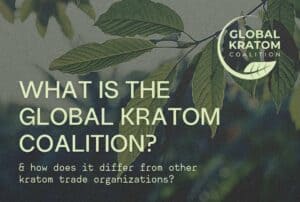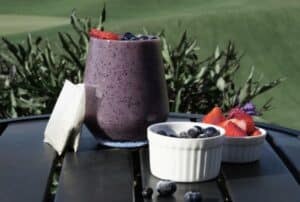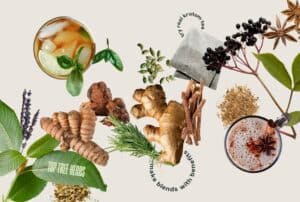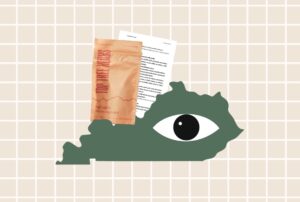Winter can cast a chilly, quiet spell over our lives. It’s normal to feel a bit subdued during these colder, darker days. In such times, a gentle, comforting pick-me-up can make all the difference. So what’s the best tea for winter to stay warm and uplifted?
While we do have a favorite wintertime tea, we’d argue that overall, the best tea for winter isn’t just one brew. The best tea—for any time of year, not just winter—depends on the purpose you’re using it for!
Below, we’ll cover what the best tea for winter is in each of these categories:
- Overall best winter tea: kratom
- Best tea for warmth & coziness: ginger
- Best holiday tea flavor: peppermint
- Winter tea for relaxation or rest: chamomile
- Tips for using tea to stay motivated
- Cozy & festive winter tea recipes
Before we dive into each category, however, we’ll quickly explain how we chose our favorite winter tea: kratom.
1. Kratom Tea: Overall Best Tea for Winter
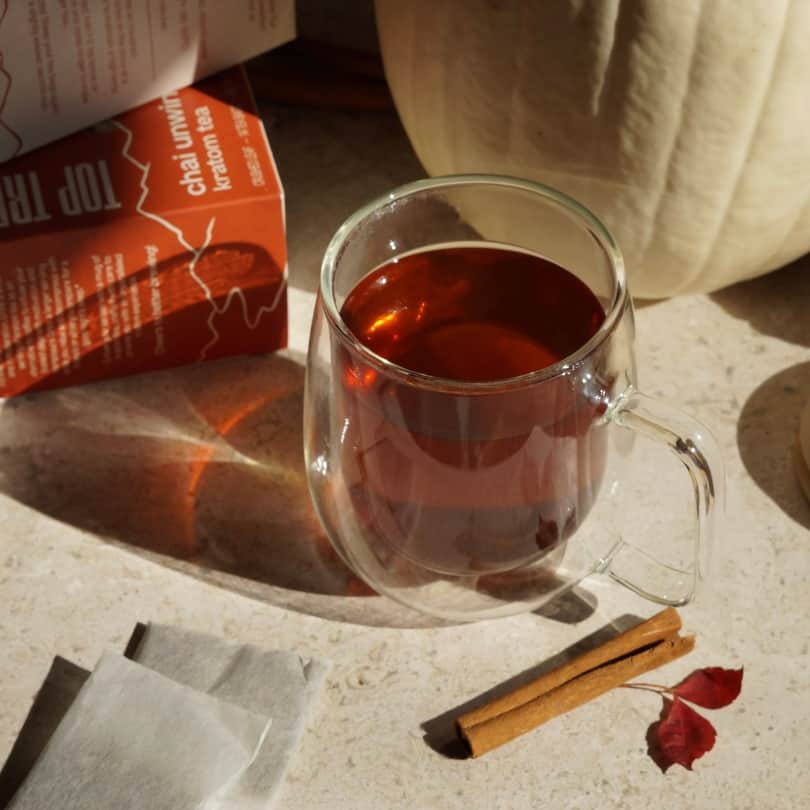
Our favorite winter tea comes from the Mitragyna speciosa tree. It’s colloquially called kratom tea, and it stands out for its unique versatility and rich cultural background.
The reason kratom is our favorite winter tea is because it’s functional—you can brew it to be energizing, relaxing, or uplifting—not just warm and tasty.
Kratom is tropical plant from the lush regions of Southeast Asia. For centuries, communities of people in this region have taken leaves from Mitragyna speciosa trees and brewed them into tea. While it’s traditionally sipped under the hot sun, kratom tea can bring an equal measure of joy to the winter season.
Why Does Mitragyna speciosa Make the Best Winter Tea?
The reason kratom is our favorite winter tea is because it’s functional—you can brew it to be energizing, relaxing, or uplifting—not just warm and tasty.
Benefits of Smaller Amounts: You can utilize this tea for motivation (like a cup of coffee) or for relaxation and rest. That makes kratom the perfect tea for packing on your next ski vacation, since just one box serves many purposes!
Its uplifting nature can be the perfect antidote to the winter blues, offering a natural boost that can help you balance the slow, reflective pace of the season.
The tea provides these effects because the kratom alkaloids and other phytochemicals that are drawn out of the leaves interact with various brain systems. The effects are largely contingent upon the amount you consume.
Related: What is the Right Amount of Kratom Tea to Drink?
A smaller amount (1-2 tea bags) tends to be uplifting and energizing. It can provide a natural energizing boost without the jitters commonly associated with caffeine. Needless to say, this is a welcome sensation on cold mornings!
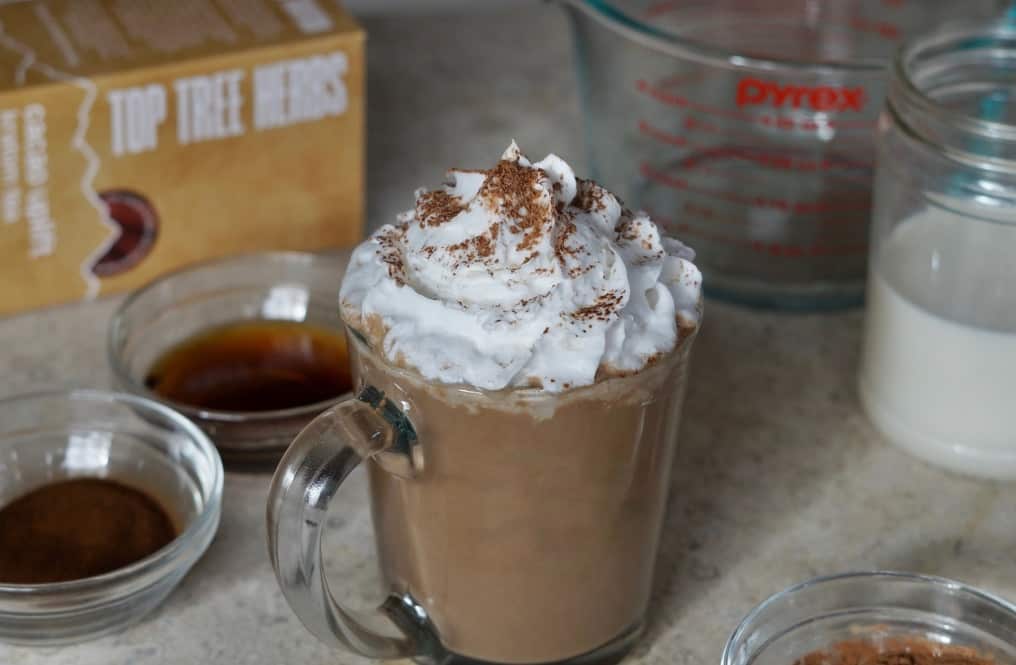
The energizing effect of kratom is not just about physical energy; it’s also about mental clarity. In the winter months, this can be particularly valuable.
The season’s shorter days and longer nights often lead to feelings of sluggishness and a lack of motivation. Kratom tea can help counteract these seasonal challenges. It offers a natural way to enhance focus and productivity.
Soothe Soreness After Hitting the Slopes
Benefits of Larger Amounts: In contrast, a larger amount (2-5 tea bags) typically offers a soothing, and relaxing experience. This phenomenon is different from the effects of caffeinated teas. Consuming larger amounts of black tea enhances the energizing effects, but this isn’t usually true for kratom.
For most people, a larger amount of kratom can support unwinding, resting, and relaxing. This tea is perfect in situations where you might otherwise reach for a glass of wine or a cup of chamomile tea. It’s also great for easing aches after a long day of hitting the ski slopes or hiking in the snow.
Flavor Profile: Tea made with kratom leaves is robust and bitter, like coffee or black tea, which can be particularly appealing during the winter.
For the best flavor (and added function) you can blend Mitragyna speciosa leaf tea with one or many of the other teas on this list. We’ll highlight a few of our favorite blend recipes below.
Preparation Tips: We recommend steeping your kratom leaves in boiling water for at least 15 minutes. Brewing in an insulated thermos is ideal, because it will keep your water hot enough to properly steep the tea. Plus, if you’re out in the cold, your tea will stay hot for a few extra hours!
Related: Your Comprehensive 2024 Guide for How to Make Kratom Tea Like an Expert
So now that you know the reasons that kratom is our favorite tea for winter, let’s explore a few other plants and herbal tea blends that are perfect for wintertime.
2. Ginger Tea: Best Warming Wintertime Tea
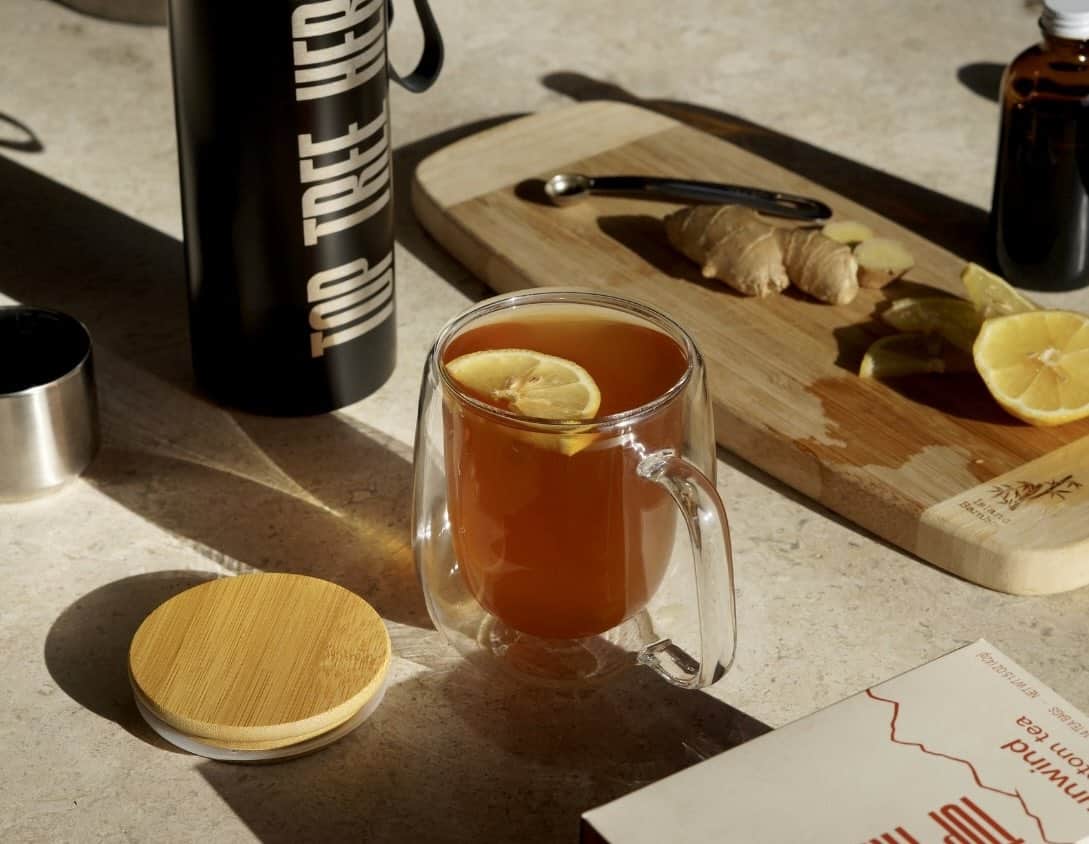
Ginger comes from the rhizome of Zingiber officinale. Tea made with ginger root is a winter favorite. It radiates heat on cold winter days. Like kratom tea, ginger tea can provide an invigorating kick, sans caffeine.
Benefits: Ginger tea has a long history in culinary and medicinal traditions worldwide. Ginger is acclaimed for its digestive aid and anti-nausea properties. It’s also known for its anti-inflammatory effects, making it a great choice for soothing winter ailments like colds and sore throats.
Flavor Profile: Ginger tea has a bold, spicy flavor. Its natural heat is perfectly suited for cold weather.
Preparation Tips: Your local market likely has at least one type of pre-packaged ginger tea bags or fresh ginger root. For an authentic ginger tea experience, try the fresh ginger root. Finely slice a 1-inch piece, then steep in boiling water for 10-15 minutes.
You can enhance the flavor with lemon, sweetener, and a dash of cinnamon for added warmth.
3. Peppermint Tea: Best Winter & Holiday Tea Flavor
Did you know that peppermint, Mentha x piperita, is actually hybrid species of mint? This popular tea leaf is a cross between watermint and spearmint. (Interestingly, some tea sold as peppermint has been found to contain just spearmint.)
Peppermint tea has a bright, wintery flavor and countless potential health benefits. It’s no surprise that it has historically been one of the most widely consumed single-ingredient herbal teas.
Flavor Profile: Peppermint tea is known for its cool, crisp taste that brings a refreshing change to the palate.
Its vibrant mintiness is both stimulating and comforting, making it a versatile choice for any time of day.
More Than Great Flavor: Peppermint Tea’s Potential Health Benefits
Health Benefits: There are many potential health benefits of peppermint tea. These range from antimicrobial properties to improved memory and recall to the alleviation of symptoms of bloating and indigestion. (Anyone else thinking of getting some peppermint tea to stock before their next heavy holiday meal?)
We should note that more clinical research is still needed to determine the health benefits of peppermint tea in particular. Most studies so far have been animal studies or clinical trials using peppermint oil or particular compounds found in peppermint, like menthol.
Preparation Tips Use fresh or dried peppermint leaves. Steep in hot water for about 7-10 minutes. To enhance the wintery flavor, add a teaspoon of cocoa powder and a drop of vanilla extract to your tea. It will remind you of peppermint bark!
4. Chamomile Tea: Best Tea for Winter Naps & Rest
The most popular type of chamomile for tea is the German chamomile plant, Matricaria recutita. The infusion of chamomile flowers in hot water has become a timeless herbal preparation known for its calming properties and gentle flavor.
Flavor Profile: Chamomile tea has a subtle floral taste with hints of apple and a light, honey-like sweetness. Its mildness makes it a soothing choice, particularly on cold winter nights when comfort is key. You can often find chamomile in other seasonal tea blends, like chai kratom tea with chamomile and rooibos.
Health Benefits: Chamomile is famous for promoting relaxation and better sleep. It’s often used to reduce stress and anxiety, making it a valuable ally against the winter blues and busy holiday stress.
Preparation Tips: Steep dried chamomile flowers in hot—not boiling—water to preserve the delicate flavors. Remove the tea after about 5 minutes.
Tips for Using Tea to Stay Motivated During Colder Months

In the depths of winter, the days are short, the light is scarce, and the weather can be brutal. We’re all too familiar with the “winter blues” and lack of motivation that comes along with these seasonal changes.
Nevertheless, there are a few tea-brewing tips you can follow to stay energized and upbeat in the winter:
- Try naturally energizing, caffeine-free teas to balance motivation and good sleep. Kratom and peppermint are naturally energizing, but their effects don’t last as long caffeine’s. That means you can drink them later in the afternoon/evening without hampering a good night’s rest.
- Brew tea for the next morning before you go to bed. Keep it in a thermos by your bedside so you wake up with a warm drink, already prepared! Choose a hearty plant like ginger root or kratom leaves which can stand up to long steeping times and high temperatures.
- Make your tea in an insulated thermos or insulated mug. Having hot tea with you can make it a lot easier to spend time outdoors in the winter! Additionally, if you’re at home or at work, it’s easier to focus on the task at hand when you don’t have reheat your tea every few minutes.
Using these tips can really jumpstart your daily routine in the winter and leave you feeling more productive, motivated, and well-rested.
Related: The Best Caffeine-Free Teas to Help You Stay Energized and Focused
An important step before you do make any of these changes is to ensure the winter teas you choose are right for you. For example, if you are nursing or pregnant, have a health condition, or are taking medication, you might need to refrain from drinking certain herbal teas—just as you might have to avoid drinking wine or coffee.
This is another reason why there isn’t just one best tea for winter—it depends on your particular needs and circumstances.
Additionally, the quality of your tea matters greatly. Like other natural products, tea plants can contain heavy metals and microbiological contaminants. Ensure you’re using lab-tested, GMP, and food-grade kratom or other herbs for the best experience.
Cozy & Festive Winter Tea Recipes
Winter teas can be much more than just a single-herb infusion or decoction. You can transform winter tea blends with mulling spice, use your tea as the base for a holiday mocktail, or turn your tea into an indulgent latte for a wintertime treat.
We crafted these recipes using kratom tea bags, but you can easily swap out kratom for another popular winter tea. Try peppermint tea in the hot chocolate, chamomile tea in your golden milk, or ginger tea in your holiday punch!
1. Tea-Infused Golden Milk
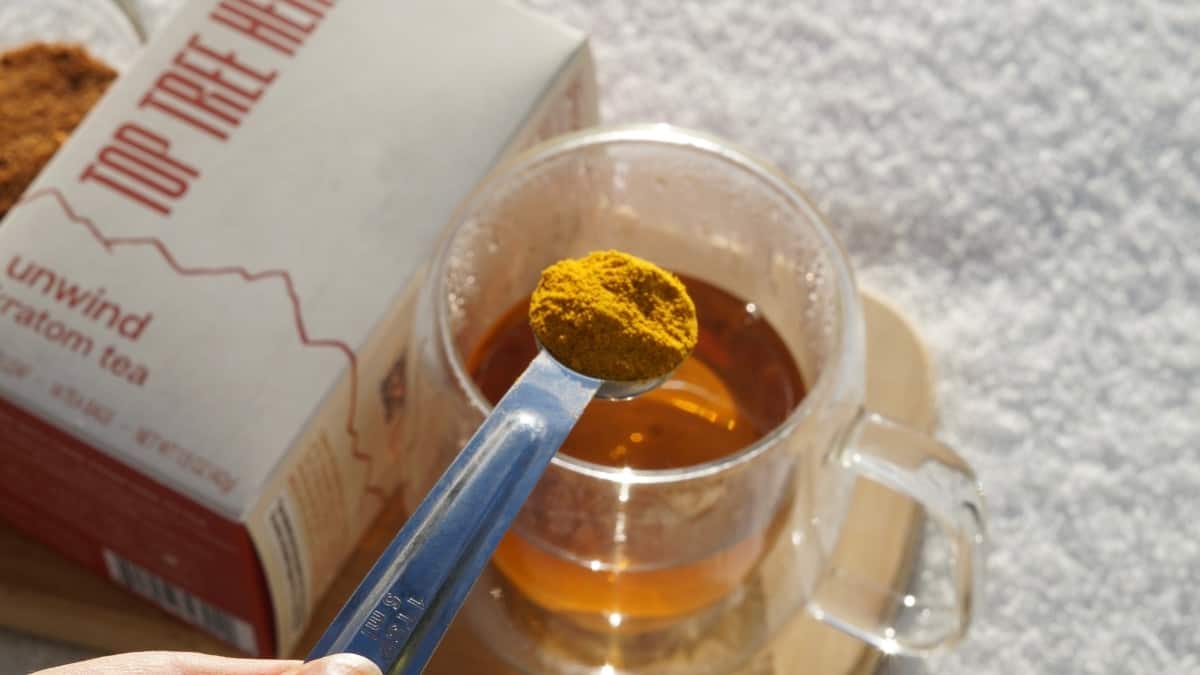
Get the golden milk tea recipe →
Get the insulated Office Hours Mug →
2. Non-Alcoholic Christmas Punch
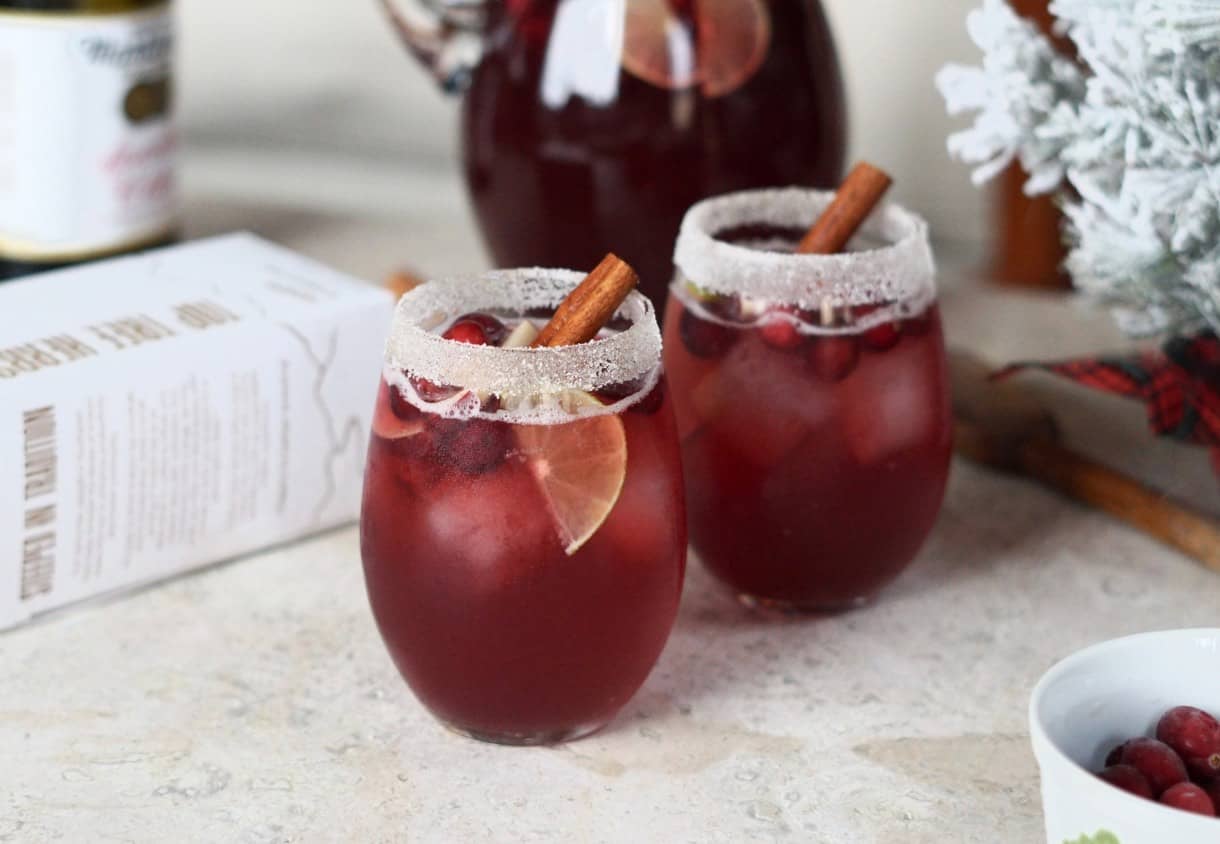
Great winter tea recipes aren’t necessarily hot! In fact, some of the best winter drinks are the ones that cool you down while you dance at holiday parties or when you snuggle up with family by the fireplace.
Christmas punch, also known as jingle juice, is definitely one of those show-stopping and memorable winter kratom tea recipes.
Get the Alcohol-Free Christmas Punch Recipe →
3. Dreamy Tea-Spiked Salted Hot Chocolate
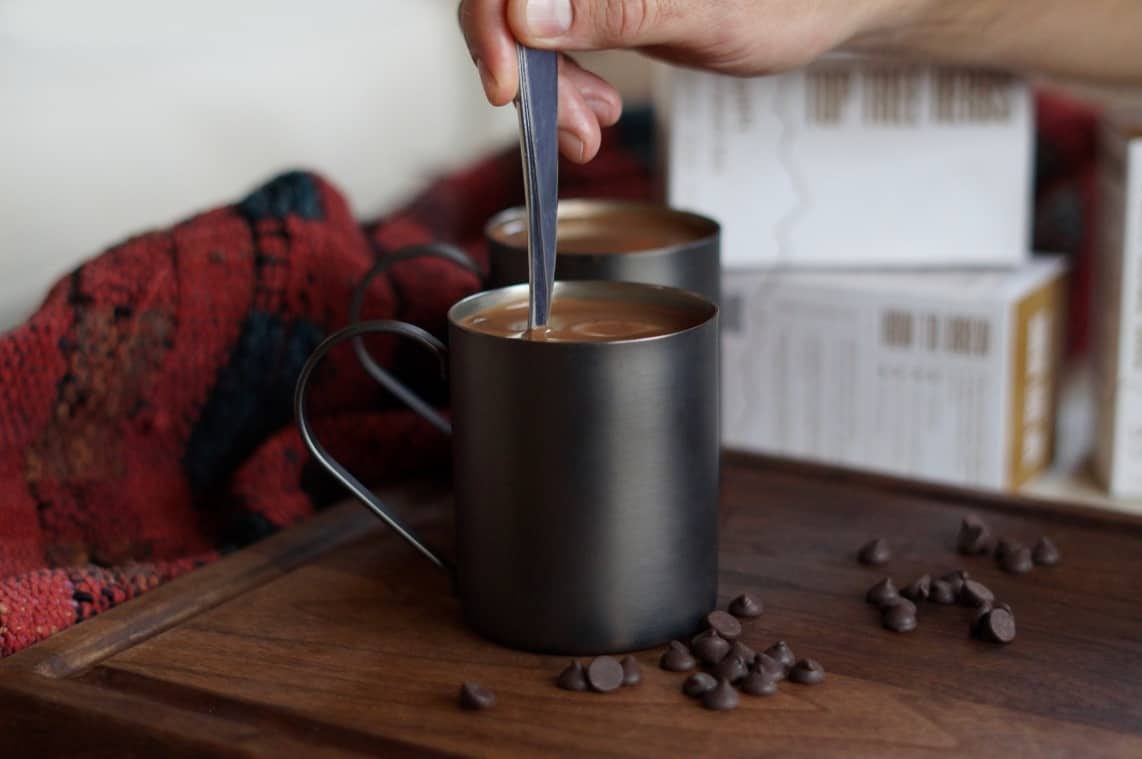
Get the Salted Kratom Hot Chocolate Recipe →
Embrace the Cold with the Best Teas for Winter By Your Side
What’s the main takeaway from our snowy trek to find the best tea for winter?
There isn’t just one single best tea for winter. That’s because brewing herbal tea isn’t just about enjoying winter flavors. Want some warmth and comfort? Or maybe a little nudge to tackle those short, dark days? There’s a tea for that!
Try making tea with kratom leaves to stay energized or get relief after a long day of winter activity. Brew up tea with fresh ginger root for delectable spice and winter warmth. Try peppermint tea for comfort and brightness, or chamomile for relaxation!
Next time you feel a winter chill, grab your thermos, pick one of these awesome teas, and make yourself the perfect cuppa. It’s all about finding those little moments of joy and comfort, even when it’s cold and dark outside.
Cheers to better brewing, and stay cozy this winter!


